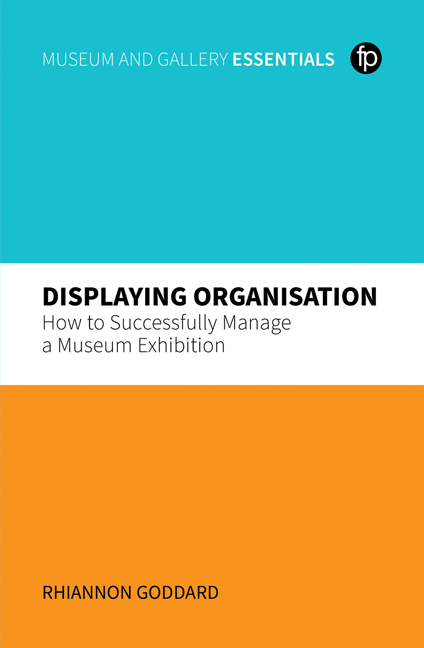Book contents
- Frontmatter
- Dedication
- Contents
- Figures, Tables, Boxes and Case Studies
- About the Author
- Acknowledgements
- Introduction
- PART 1 DEFINING THE PROJECT
- PART 2 PLANNING THE PROJECT
- PART 3 EXECUTING THE PROJECT
- PART 4 TRANSITION
- PART 5 EVALUATING THE PROJECT
- PART 6 KEY PROJECT MANAGEMENT SKILLS
- Bibliography
- Index
- Frontmatter
- Dedication
- Contents
- Figures, Tables, Boxes and Case Studies
- About the Author
- Acknowledgements
- Introduction
- PART 1 DEFINING THE PROJECT
- PART 2 PLANNING THE PROJECT
- PART 3 EXECUTING THE PROJECT
- PART 4 TRANSITION
- PART 5 EVALUATING THE PROJECT
- PART 6 KEY PROJECT MANAGEMENT SKILLS
- Bibliography
- Index
Summary
Introduction
In this chapter we will look at the role of the PM on site, when a project is being installed in the gallery space. From setting up the space to considering health and safety on site, we will consider the sequencing of work and the importance of change control. This is a busy part of the project where you will need to be present on site regularly and keep careful control of what is happening.
Preparing the space
This is the most exciting part of the project, when you see all the hard work that has been put in so far start coming to life on site. You will need to get some things in place before construction starts. It is important to set up the site so that work can be carried out efficiently and, even more importantly, safely. Begin by thinking about the types of space that will be needed to make the installation go smoothly.
You will need spaces where loaned objects can be delivered safely and where objects from your museum's own store can be unpacked and sorted, ready for display. For large exhibitions you may need somewhere to unload trucks and isolate loaned objects before they are brought into the space. You will also need somewhere to store the materials in which loaned objects are packed. These may be quite large boxes or even crates. The space doesn't need to be right next to the exhibition space, but it will help if you don't have to transport things too far, as it's not much fun having to carry empty, awkwardshaped boxes from one end of your museum to the other at the end of a long day of installation work.
As well as storing the objects safely you may need to make frames or mounts for some of them before they go into their showcases. Where will this happen? Will they all be made on site and, if not, do you have room for them all to be delivered at once?
Can you set up a temporary office near the exhibition space for staff who need to do documentation work and for you, the PM, so that you can keep an eye on the activity happening on site each day?
Will you be photographing the objects for a catalogue or a book? If so, where will you set up for this?
- Type
- Chapter
- Information
- Displaying OrganisationHow to Successfully Manage a Museum Exhibition, pp. 85 - 100Publisher: FacetPrint publication year: 2023

